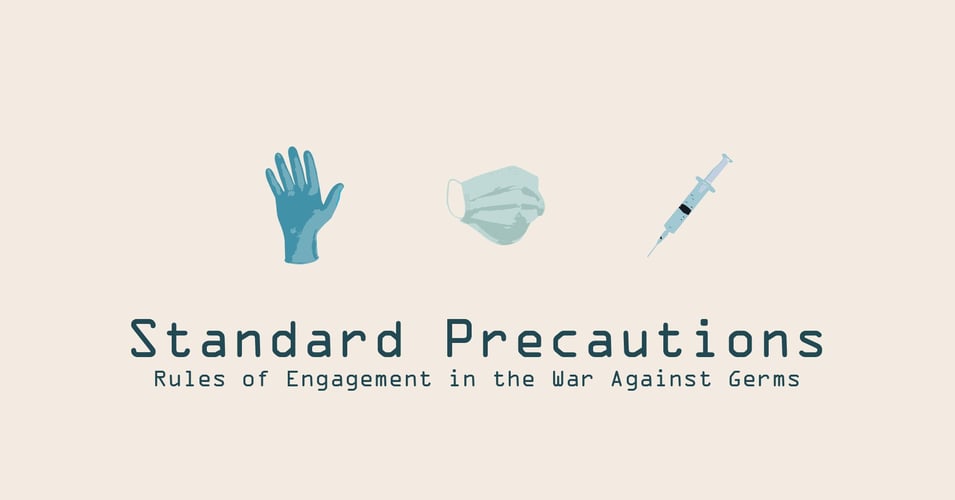Summer's Pesky Pathogens

 Two ingredients make for a perfect environment for pathogens: Warmth and moisture. No season better provides this environment than summer. Just think: Warm days keep our bodies sweaty, swimming in pools or oceans keeps our clothes and skin damp, and outdoor activities expose us to pests, sun, and unrefrigerated food. It's a recipe for happy pathogens and miserable hosts. Read today's post to find out the top summer pathogens and what you can do to avoid them.
Two ingredients make for a perfect environment for pathogens: Warmth and moisture. No season better provides this environment than summer. Just think: Warm days keep our bodies sweaty, swimming in pools or oceans keeps our clothes and skin damp, and outdoor activities expose us to pests, sun, and unrefrigerated food. It's a recipe for happy pathogens and miserable hosts. Read today's post to find out the top summer pathogens and what you can do to avoid them.
The pathogens that you encounter in the summer can be divided into two categories: Natural pathogens that simply, by their nature, thrive during summer months, and unwelcome pathogens that flourish due to human-created opportunities.
Natural Summer Pathogens
Ticks are potentially summer's greatest threat. The bite from this arachnid itself is not dangerous, but rather the pathogens they pass into the bloodstream including bacteria, viruses, and parasites. The most common diseases that transmit to humans via a tick bite are Lyme disease (Borrelia burgdorferi bacteria) and Rocky Mountain Spotted Fever (Rickettsia spp. bacteria). The CDC offers this advice to avoid tick bites. In general, if you are going to be in an area where ticks can be expected, use an EPA-registered repellent, wear long pants and sleeves, and check your clothing and body for ticks after being outdoors. As always, consult your physician for the best medical advice.
Mosquitoes are another typical summer pest. These flying insects can carry dangerous viruses such as Zika, West Nile Virus, and malaria. Thankfully, these transmissions are rare in the continental US. However, avoiding bites is always a good precaution, since even a bite from a disease-free mosquito can become infected. Use an EPA-registered repellent, wear long pants and sleeves if in areas with high concentrations of mosquitoes, and treat any bites as you would any other breaks in the skin (antiseptic, waterproof bandage, etc.)
Just as a regular mosquito bite damages our skin and makes us vulnerable to infection, so also does severe sunburn. Make sure to wear sunblock to avoid the blistering and raw skin that can accompany a severe burn. Remember, your skin is your first-line of defense against bacteria!
Natural bodies of water - freshwater and saltwater alike - can become contaminated with pathogens that are risky to humans. Those that are seasonal include Vibrio bacteria, which occur naturally in coastal waters and can reach dangerous levels during warm summer months. Swimmers with a cut or skin damage can contract a vibriosis rash, but most cases are as a result of consuming raw seafood (typically oysters) from contaminated water. Always cover cuts with a waterproof bandage before swimming, avoid raw oysters, and wash your hands after handling raw seafood.
Human-Created Opportunities
There is also water contamination that occurs as a result of humans. Every state has water quality standards based on EPA recommendations, and local sources can provide the daily testing data for common bacteria such as E. coli. Some localities will post a sign at the beach warning visitors of bacteria levels. (Here is an example of a daily bacterial report for coastal Virginia.) Obey swimming advisories or risk contracting a stomach or skin infection.
We all know to be careful with food at picnics. Food spoilage is of course a concern, requiring innovative ways to keep containers chilled on hot summer days. But of greater risk is actually undercooked meat! Cooking to the proper temperature assures destruction of any possible pathogens, such as E. coli. Undercooked meat could still contain enough bacteria to cause an infection.
One risk that also involves food is machine dispensers. These machines, such as soft ice cream, frozen drink, and soda dispensers, rely on tubes and nozzles that remain wet for hours at a time, often in the presence of sugar. Therefore, thorough daily cleaning is essential to keep these machines free from mold, fungus, or bacterial contamination. Feel free to ask an attendant the last time the machines were cleaned - it should be within the last 24 hours!
Finally, swimming pools. Despite the chlorine, some pools get so contaminated over time that the chemical can no longer do its job of killing bacteria. To make sure any pool you visit has enough chlorine, you can actually test it yourself. Many big box stores and all pool supply stores carry pool testing strips. While chlorine cannot kill all pathogens (just look up cryptosporidium, if you dare), it is the best way to keep pool water clean. But no one should ever drink pool water (YUCK!) or swim with an uncovered cut or skin damage. And after swimming, reduce your risk of getting a fungal infection by wearing sandals or shower shoes throughout any public changing area, and get into dry clothes as soon as possible.
We hope this overview of summer's peskiest pathogens has armed you with information without taking any of the sheen off of the season's fun and adventure! As always, prevention is key! Have a safe and healthy rest of your summer!
Editor's Note: This post was originally published in June 2018 and has been updated for freshness, accuracy and comprehensiveness.
![EOScu Logo - Dark - Outlined [07182023]-01](https://blog.eoscu.com/hubfs/Eoscu_June2024/Images/EOScu%20Logo%20-%20Dark%20-%20Outlined%20%5B07182023%5D-01.svg)





